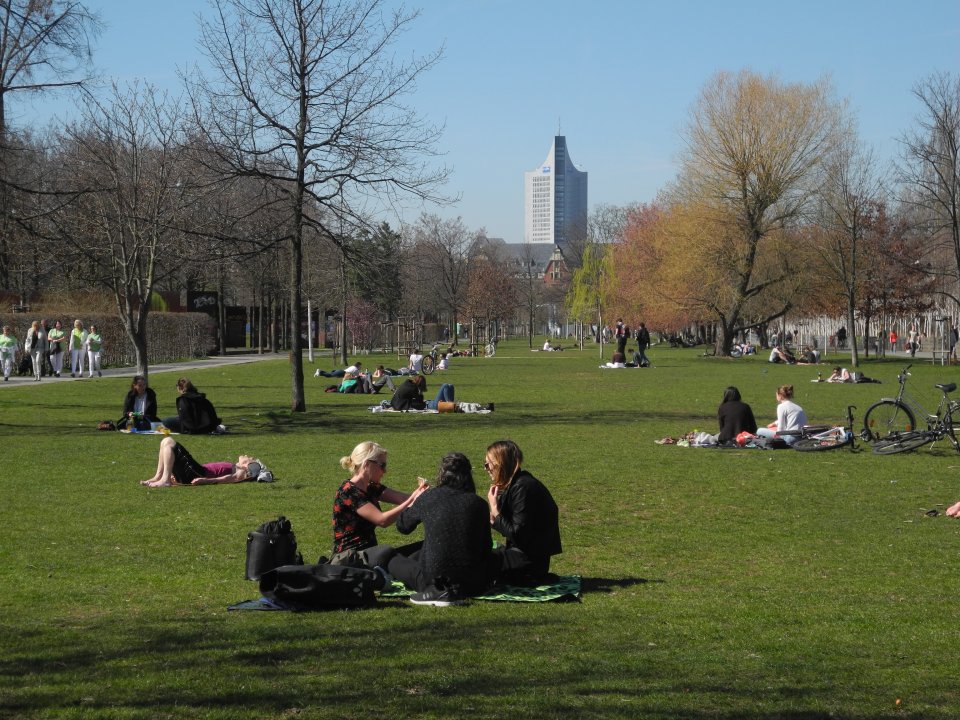
Biogeographic region: Continental
Surface area: 297 km² (city area), 56,737 planted roadside trees (status 2016) and a potential of another 45,000 possible road tree locations (Office for Urban Greenery and Water Leipzig, 2019
Country: Germany
Region/Province: Saxony
In 1996, Leipzig launched the fundraising campaign "Baumstarke Stadt" as a political instrument. The project has two goals: On the one hand, the money is used for the planting of new trees. On the other hand, the city seeks to establish a long-term engagement of citizens with the city greenery. A location for the plantations is determined by the Office for City Greenery and Water. The Office is also responsible for the implementation of the planting.
The donor can currently choose the tree species from a current planting catalogue. Those who also take on sponsorship can choose a sponsored tree between these specified locations and young trees that have already been planted.
The city takes care of the sponsored trees. But it needs to be questioned how sustainable the plantings of new city trees in Leipzig is planned and implemented, and which ecological, social and economic challenges are related to this Programme.
The Project ‚Baumstarke Stadt‘ Leipzig aims to generate financial resources to allow tree planting and further to establish a long-term engagement of citizens with the urban green areas they live in. The project, therefore, aims to provide multiple ecosystem services, including regulating, supporting and cultural functions.
PRINCIPLE UF-NbS (Urban Forests as Nature-Based Solutions) ACTION(S)
- Street tree plantations
- Ecological corridors to overcome barriers that prevent ecological connectivity
- Annual implementation of new plants/trees
- Provide shadow and thus contribute to cooling corridor pedestrians can use and what improves the adjacent living conditions
OTHER PRINCIPLE NbS ACTION(S) – non-UF
- Encourage engagement of citizens with local green and green initiatives
- Sponsorship provides additional budget for maintenance e.g. due to heat and climate change adaptation
- Increase awareness of NBS solution & their effectiveness and co benefits
- Social learning about location & importance of NBS
So far, an increasing interest to be a tree-steward shows that people can made interested in co-funding urban greenery and this way appropriating it – definitely a blueprint for other cities.
The fundraising campaign "Baumstarke Stadt" in the City of Leipzig can be seen as a well-established and successful strategy to increase the tree infrastructure of the city while establishing a long-term engagement of citizens with this type of greenery. Trees as nature-based solutions are this way promoted for co-development and co-design to alleviate problems of heat, air pollution and noise in the city in a participatory way.
Community fundraising:
The core of the Programme is a sponsorship for urban trees in public parks, along streets and on squares, on cemeteries. The donation is based on any amount from 250 Euro onwards.
City, regional general funds:
The City of Leipzig has its own budget for planting and, particularly, for maintaining trees. However, without the donations for the trees the number of newly planted trees would be lower by about one third annually. The full costs for a tree range between 700 - 1,000 Euro.
National government funds:
All planning aspects of the city has to meet or address the objectives formulated in the Integrated Urban Development Concept (INSEK) 2030 (see point j.III). A developed concept and associated instruments like the Programme “Baumstarke Stadt” meeting its overall objectives is a prerequisite for getting funded by any of the national funding Programmes for urban development. In addition, maintaining the long-term character of the Programme, particularly the plenty of responsibilities (see point j.I) is challenging due to staff costs. Currently, the support of interested parties, donors and tree sponsors including consultation and documentation is realized with the support of staff from the national employment promotion (Arbeitsförderung) and, in the future, maybe by the Federal Voluntary Service.
Private sector investment:
Private sponsoring companies
- Urban trees
- Urban forest
- Tree rows
- Single trees
- Choice of plants
- Tree and forest plantations
- Public park
Dagmar Haase (dagmar.haase@hu-berlin.de, dagmar.haase@ufz.de)
Manuel Wolff (manuel.wolff@hu-berlin.de, manuel.wolff@ufz.de)
Humboldt-Universität zu Berlin
Department of Geography / Lab of Landscape Ecology
Unter den Linden 6 / 10099 Berlin / Germany
Helmholtz-Centre for Environmental Research – UFZ
Permoserstrasse 15 / 04318 Leipzig / Germany
Further information
The compilation of this case study description has been funded by the Horizon 2020 CLEARING HOUSE project. This project has received funding from the European Union’s Horizon 2020 research and innovation programme under grant agreement No 821242.
- 3. Good Health and Well-being
- 11. Sustainable Cities and Communities
